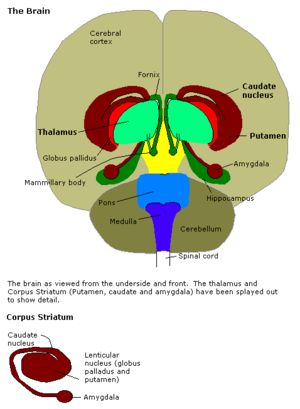
I have no doubt that the Syrian administration used chemical weapons against the rebels in its ongoing battle to suppress the insurrection against their totalitarian regime. Apparently, nearly 1500 people died from what has been identified as a nerve gas attack.

It is absolutely abhorrent that a government would do this to its own people. I do not, however, think that we create change by use of weapons. Bombing Syria for killing their own citizens is not going to change things, but it will more than likely bring Iran into the conflict, which then brings Russia into the situation. This is a no-win for the US.
More than that, attacking anyone for using chemical weapons is complete hypocrisy. Our own government consistently allows corporations to poison Americans on a regular basis with chemicals known to be toxic, to cause cancers, and to disrupt the endocrine system.
Among the persistent organic pollutants (POPs) that contaminate our food supply are the following (Schafer and Kegley, 2002):
This class of chemical agents includes many organochlorine pesticides such as chlordane, dieldrin, DDT (and its main metabolite, DDE), aldrin, endrin, heptachlor, hexachlorobenzene, mirex, and toxaphene. POP chemicals targeted for international phase out also include industrial chemicals and byproducts of certain manufacturing processes and waste incineration such as polychlorinated biphenyls (PCBs), dioxins, and furans.
The characteristics that make POPs chemicals unique also make them an urgent global environmental health problem. Because of their physical properties, these chemicals:
The health risks from these chemicals are well-known (cancer, birth defects, endocrine disruption, and so on), yet the government (the Food and Drug Administration and the Environmental Protection Agency) allows their presence on the foods we consume. As one example, here are the allowable levels of DDT on the foods we might consume believing that we are eating healthily:• persist in the environment for many years;In just a few decades, POPs have spread throughout the global environment to threaten human health and damage land and water ecosystems.All living organisms on Earth now carry measurable levels of POPs in their tissues. POPs have been found in sea mammals at levels high enough to qualify their bodies as hazardous waste under US law [1], and evidence of POPs contamination in human blood and breast milk has been documented worldwide [2, 3].
• concentrate in fatty tissues and bioaccumulate as they move up the food chain;
• travel long distances in global air and water currents, generally moving from tropical and temperate regions to concentrate in the northern latitudes; and
• have been linked with serious health effects in humans and other living organisms, even at very low exposures.
The smallest amount of DDT known to pose a risk to adults is 35 micrograms (10 mcg for children), yet an average American diet, not even including junk foods, can contain as much as 3,154 mcg of DDT, more than 90 times the amount known to present health risks.
Another class of toxic chemicals in the environment is engineered nanomaterials (NM), which "are already being used in sporting goods, tires, stain-resistant clothing, sunscreens, cosmetics, and electronics and will also be increasingly utilized in medicine for purposes of diagnosis, imaging, and drug delivery" (Nel, Xia,Madler, and Li, 2006). Further,
The main characteristic of NM is their size, which falls in the transitional zone between individual atoms or molecules and the corresponding bulk materials. This can modify the physicochemical properties of the material as well as create the opportunity for increased uptake and interaction with biological tissues. This combination of effects can generate adverse biological effects in living cells that would not otherwise be possible with the same material in larger form.And . . .
The biological impacts of NM and the biokinetics of nanoparticles are dependent on size, chemical composition, surface structure, solubility, shape, and aggregation. These parameters can modify cellular uptake, protein binding, translocation from portal of entry to the target site, and the possibility of causing tissue injury (4). At the target site, NM may trigger tissue injury by one or more mechanisms (Table 2). Potential routes of NM exposure include gastrointestinal tract (GIT), skin, lung, and systemic administration for diagnostic and therapeutic purposes. NM interactions with cells, body fluids, and proteins play a role in their biological effects and ability to distribute throughout the body. NM binding to proteins may generate complexes that are more mobile and can enter tissue sites that are normally inaccessible. Accelerated protein denaturation or degradation on the nanoparticle surface may lead to functional and structural changes, including interference in enzyme function (24). This damage could result from splitting of intramolecular or intramolecular bonds by catalytic chemistry on the material surface (Fig. 2).

Fig. 2. Possible mechanisms by which nanomaterials interact with biological tissue. Examples illustrate the importance of material composition, electronic structure, bonded surface species (e.g., metal-containing), surface coatings (active or passive), and solubility, including the contribution of surface species and coatings and interactions with other environmental factors (e.g., UV activation).The real issue with these substances is that we know so very little about how they interact in the body and the ways they might disrupt our health (although we do know that most of them cause the formation of reactive oxygen species [ROS] that are associated with oxidative stress in cells). Yet there is no regulation on these substances.
The best known and most researched toxins in our food, water, and air are endocrine disruptors (EDs), such as estrogenic, antiandrogenic, or thyroid-disrupting agents. Combinations of EDs are known to produce synergistic effects even if the quantity if each chemical is low enough that they usually would not, by themselves, produce observable effects (Kortenkamp, 2007). Once again, however, very little is known about how mixtures of chemicals from different classes of EDs might affect our health.
While men seem to be more susceptible to the EDs (especially the xenoestrogens), women's cosmetics are filled with potentially and known to be harmful chemicals.

While there are many here that have potential toxicity, UV filters (sunscreen), found in many facial creams, are known endocrine disruptors, which can cause weight gain, birth defects, infertility, and cancer, among other things (see Schlumpf, et al, 2004; Heneweer, Muusse, van den Berg, and Sanderson, 2005).
A few months ago, a new study by Researchers from the School of Public Health at U.C. Berkeley (Liu, Hammond, and Rojas-Cheatham, 2013), published in Environmental Health Perspectives, gained a lot of media attention. Two previous studies had found high levels of lead and/or cadmium in lipsticks:
[T]wo other studies evaluated lead in eye shadows and lipsticks including a U.S. Food and Drug Administration (FDA) study that detected lead in all tested lipsticks (Hepp et al. 2009) and a study (Al-Saleh et al. 2009) that identified several cosmetic products containing lead above 20 ppm, the FDA limit of lead as an impurity in color additives for cosmetics (U.S. FDA 2011). Studies conducted in other countries have also detected lead and cadmium in some lipstick samples (Adepoju-Bello et al. 2012; Brandao et al. 2012; Gondal et al. 2010; Solidum and Peji 2011).In the present study, the researchers tested 32 drugstore and designer lipsticks and glosses for nine metals, including lead, aluminum, cadmium, chromium, and manganese - all of which may have cancer-causing or neurotoxic effects with exposure. The study found manganese, titanium, chromium, nickel, and aluminum in nearly every product, lead in 75 percent of the lipsticks, and cadmium in nearly half.
Perhaps the most pernicious substances (also EDs) are the phthalates, which research has linked to type 2 diabetes and childhood obesity, among other things. From US News and World Report (2012):
Found in everything from toys to perfume, phthalates belong to a class of chemicals called "endocrine disruptors," because they interfere with the body's hormone systems. Other chemicals in this category are Bisphenol A (BPA), which is used in plastic and canned foods, and was recently banned in baby bottles by the FDA, and parabens, commonly used to preserve personal care products. The U.S. Environmental Protection Agency has proposed adding eight types of phthalates and BPA to its list of chemicals that "may present an unreasonable risk of injury to human health or the environment" and has requested further study of these chemicals from the U.S. Office of Management and Budget's Office of Information and Regulatory Affairs. Like BPA, phthalates aren't always listed in a product's ingredients. In fact, phthalates are often grouped under the catch-all ingredient, "fragrance," rather than separately identified on cosmetic labeling.Strangely, there is considerable disconnect in the medical community about the FDA and regulation of these chemicals. Michael Roizen, an internist, anesthesiologist, and chair of the Cleveland Clinic's Wellness Institute (and co-author with Dr. Oz of the YOU series of health books), is quoted in the US News article saying, "If it was definitive, the FDA would have done something about it already." Yeah, sure, you betcha.
A study presented at the Endocrine Society's annual meeting in Houston this summer showed a correlation between phthalates and childhood obesity. That study along with "hundreds of others in the last few years," according to the group, caused it to issue a forceful statement, calling for further federal regulation of endocrine-disrupting chemicals, which research suggests may interfere with healthy human development. Congress banned several phthalates in children's toys in 2008.
Taken together, all of these exposures to toxic substances likely is contributing to the increases in diabetes, obesity, cancers, and other potentially deadly illnesses.
With the failure of the FDA and the EPA to impose restrictions on these chemicals, our government is complicit in poisoning the US population, and since some of these chemicals have become ubiquitous environmental toxins, we are also poisoning the rest of the world.
There is considerable hypocrisy in our government condemning other governments for poisoning their citizens when ours is doing the same, just more subtly, to its own citizens.










